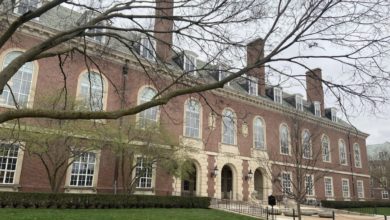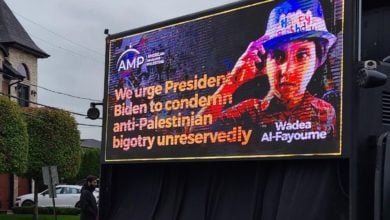On July 11, Urbana City Council voted to approve a special use permit to consolidate jail facilities in Champaign County at the urging of local law enforcement entities. While this may seem innocuous, it is the latest development in a years-long struggle of Champaign County residents against undemocratic and pro-incarceration practices of the local governments in the Champaign-Urbana metropolitan area.
Champaign-Urbana is home to the flagship campus of the University of Illinois system, which has a total enrollment well over 50,000 and some very high-profile colleges and programs. Hosting a prestigious public university lends a sense of prosperity to the area, which is not necessarily deserved. According to James Kilgore, a research scholar at the university, this creates a false image of prosperity. In an interview with Liberation News, he said, “Inequality is masked by an image or facade of prosperity put forward from having a world-class university.” While state and local governments, as well as the local ruling class, propagandize about the innovation and opportunity created by the university, the local working class continues to suffer. This suffering is especially visible with the Black residents of Champaign County.
Champaign-Urbana has a major racial disparity issue in arrest and incarceration. According to the Illinois Criminal Justice Information Authority, the rate of arrest for violent crime in Champaign County in 2018 was 24.66 per 1,000 Black residents and only 2.43 per 1,000 white residents. Similarly, the 2021 Champaign County Sheriff’s Office Annual Report states that 56% of jail bookings involved Black folks to a mere 34% for white folks. This is in a county that, according to the U.S. Census Bureau, is 71.2% white and only 14.4% Black.
Kilgore, who has also been an active member of Build Programs Not Jails, attested that when BPNJ did an investigation of racial disparity in incarceration in Champaign County, they found that the jail population ranged between 50% to 70% Black. When asked about the cause for this overrepresentation, Kilgore attributed it to structural racism, stating that, “Champaign-Urbana is rife with income inequality; it’s higher here than the Illinois average.” The poverty and lack of opportunities faced by Black residents of Champaign County is the true crime.
While the history of this issue goes back at least to 2011, the first real test of public support for the jail consolidation project was in 2016 when a proposed sales tax increase to fund the jail project was resoundingly voted down by the public. Lack of public support, however, has not stopped the city and county governments from pushing forward with the project, which is estimated to cost some $20 million.
Running an end-around on popular sentiment, local officials have concocted an autocratic funding scheme. According to Champaign County Board records and the News Gazette, the plan entails misappropriation of at least $5 million in federal American Rescue Plan funds with the rest of the cost covered by issuing revenue bonds. This comes after much popular outcry against this approach, with organizations such as the Champaign County Bailout Coalition leading campaigns to stop the misappropriation of federal funds.
If funding a jail project with revenue bonds seems questionable, that is because it is. Revenue bonds are often employed by municipalities to fund revenue-generating projects, such as toll roads or bridges. The idea is that those bonds will eventually be paid off using the revenue generated. However, jails do not generate revenue.
Municipalities that use revenue bonds to fund the construction of jails are essentially performing legal trickery to unilaterally guarantee funding: “When voters began rejecting general obligation bonds for prison construction, state[s] worked a way around the constitutional and statutory restrictions” and “began using lease revenue bonds to construct correctional facilities.” (Forbes) This move by the local governments in Champaign County is an explicitly undemocratic maneuver.
FirstFollowers, a local organization that runs reentry programs for the formerly incarcerated, also campaigned for more appropriate use of ARPA funds. While the calls to stop the funding of the jail project with ARPA funds were ultimately ignored, FirstFollowers has successfully petitioned the city governments to commit at least 10% of those funds to supporting community programs to reduce violent crime in the area. Kilgore, who is their Director of Advocacy and Outreach, states that results of the campaign have been “pretty positive with the city governments sticking fairly close to that.”
FirstFollowers is also working to bring together a coalition of local organizations to address the issue of violent crime, an issue touted by local law enforcement as a justification for the jail project. The H3 — Harm, Healing, Hope coalition will, in Kilgore’s words, “build political power to push for more change.” In his opinion, organizers in small college towns “don’t build organizations capable of mobilizing and stopping the local ruling class from driving their agenda forward.” Grassroots movement building is a long-term project and we have to look beyond the university and its students to build a popular movement capable of championing the needs of the local working class.
As this story shows, images can be deceiving. Lurking beneath the facade of liberalism and prosperity put up by the university and local officials, is a reality of racial disparity, severe income inequality and undemocratic government action. This goes to show that racist and authoritarian law enforcement practices are not only a feature of major cities. The capitalist class requires a strong police state to enforce its undemocratic policies and quell opposition from working people. Capitalism cannot resolve its internal contradictions. Only a strong, grassroots, socialist movement can effectively and thoroughly address the issues of the American police state.
Feature photo: Champaign County, Illinois, Correctional Center. Liberation photo





